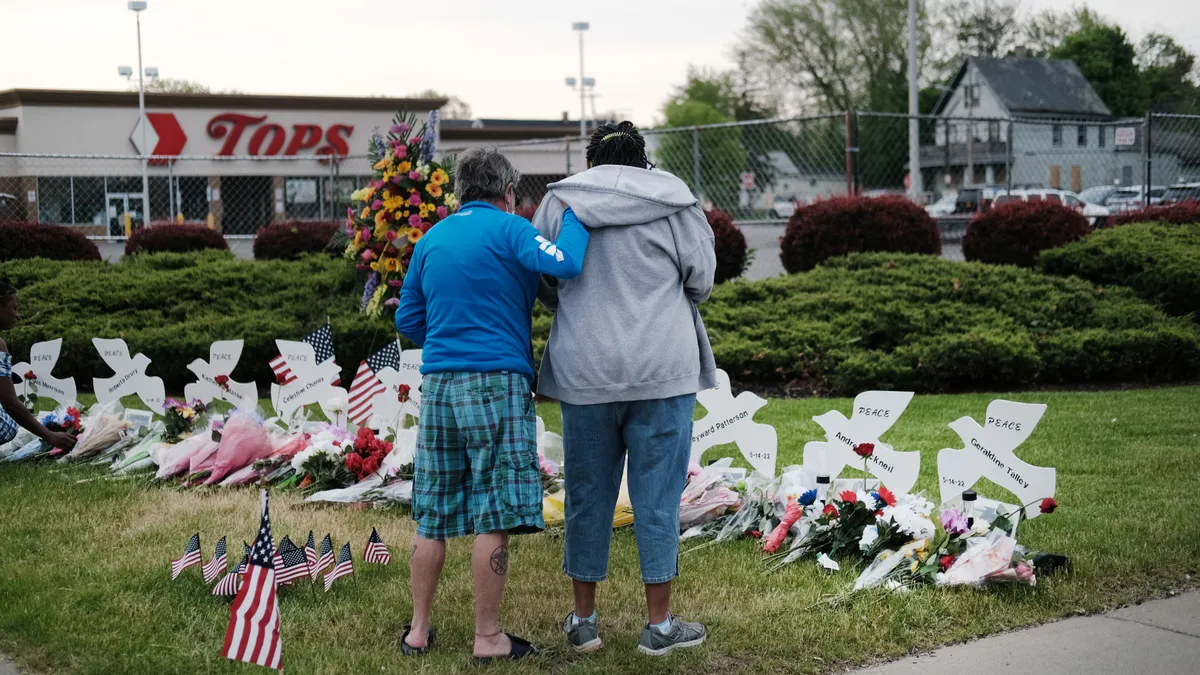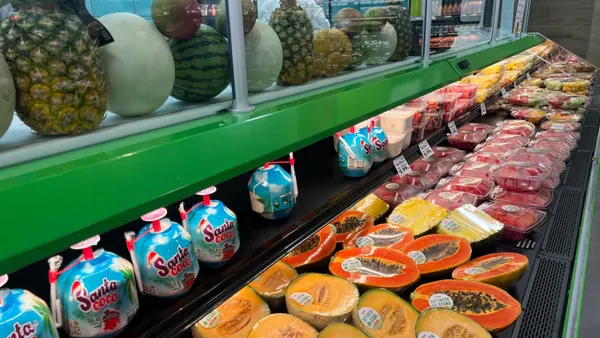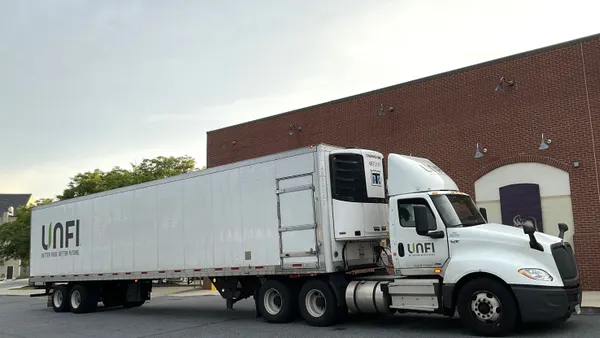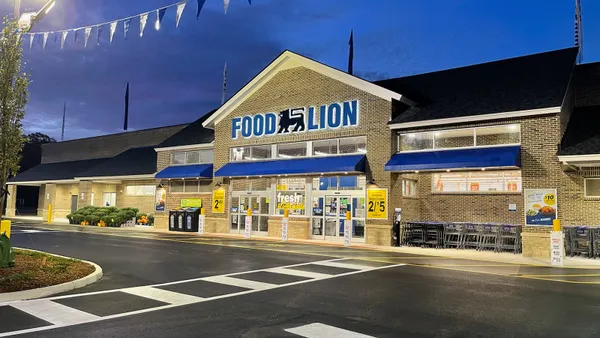In the wake of recent mass shootings, including a racist attack at a Tops Friendly Markets store in Buffalo, New York, that left 10 Black people dead, finding ways to deal with the ever-present threat of violence in the U.S. is taking on added urgency for the grocery industry.
Similar to when the mass shooting that killed 10 people at a King Soopers in Colorado last spring prompted increased safety discussions within the industry, the Tops shooting has resurfaced a painful and yet paramount discussion for grocers: how to keep workers and customers safe at their locations.
The grocery industry already has numerous resources to explore to help prevent and mitigate violence, including active assailant training, security guards, emergency preparedness guides from trade groups and various technology, such as cameras and alert tools.
But grocers still have more areas to explore to increase their security measures, the Food Industry Association (FMI) stressed in a recent online webinar held with security expert William Flynn.
During the event and in subsequent phone interviews with Grocery Dive, Flynn and Doug Baker, vice president of industry relations for the trade group, urged grocers to collaborate inside and outside their companies and outlined additional safety efforts worth consideration. They emphasized that the industry can accelerate knowledge-sharing with other industries, local organizations and internally with employees to become better prepared for potential violence.
The call by Flynn and Baker for grocers to keep seeking new and improved safety opportunities comes at a time when the grocery industry continues to see violent incidents happen across the country — from a deadly robbery in California to a supermarket employee allegedly stabbing a co-worker in New Jersey to repeated attacks on a grocery store worker in Maryland.
While the physical and verbal assaults inside grocery stores and in their parking lots don’t often garner the same national attention as mass shootings, FMI's recent “Asset Protection in Food Retail” report found that in-store violence may be more common than grocers realize. In a November survey of 18 companies representing more than 12,000 stores, 61% said they have experienced an active shooter incident, with 17% saying it’s happened more than once. Meanwhile, 96% said they have encountered civil unrest, with 94% dealing with it more than once.
"Unfortunately, the number of these events continues to trend in a very disturbing upward pattern. ... We know that violence is triggered by stress, anxiety, depression and all these other emotional issues. In the past two years, we've been dealing with a plethora in a perfect storm," said Flynn, a former principal deputy assistant secretary of the Department of Homeland Security’s Office of Infrastructure Protection and former assistant commissioner of the New York City Police Department.
What collaboration can look like
Baker sees a need for cross-sector conversations, particularly with organizations that are also considered soft targets, like places of worship and schools. On the national level, industry groups can connect with each other to share expertise, while on the local level, store managers can seek out organizations and communities to form alliances and brainstorm ideas for how to increase safety, Baker said.
Grocers and businesses in a specific area, like a neighborhood or town, can create a communication alert system that notifies members of the group as well as law enforcement of an incident, Baker suggested.
"If an event happens at a grocery store, it's possible that that adversary has done surveillance at other stores and locations, and it might be something that you can connect the dots and pick up on if there is a network — not just of grocers — but of businesses that are contiguous and in your area so that you're all having a network sharing what you're seeing in terms of suspicious behavior," Flynn said.
Houston's downtown business district, for example, is developing and leveraging a similar model with monthly meetings, he noted.
Grocers can also partner with local organizations to share awareness. For example, Island Pacific Supermarket, a Filipino grocery chain in California and Nevada, teamed up with local law enforcement last April for a community event to address rising anti-Asian violence.
"It was a great show of solidarity between police enforcement and community members, community leaders, faith-based organizations together with government entities," the grocery chain said in a blog post that also shared the local police department's phone number for people to report hate crimes.
Flynn also recommends grocers contact their local law enforcement and fire departments to review their facilities and emergency plans, along with inviting store employees to participate.
"At the store level, I would encourage [workers] to be involved in the process, because they feel empowered. They feel like the store cares or they're taking steps to help. And frankly, their input can be very valuable," he said.
Grocers can also tap into the knowledge of their store employees.
"Associates know what the baseline is," Flynn said. "They know what's normal, and they're the first ones that can see something that is out of place ... and they need to understand how to go about reporting."
To help determine if a stranger is acting suspiciously, Flynn said store workers can say "hello" and make eye contact with them to not only establish a rapport and ask if they need any assistance but also to "see if somebody is behaving a little unusual.”
While at Homeland Security, Flynn stood up Protective Security Advisors, a service of security specialists who work closely with government agencies and private industry. Flynn told Grocery Dive that a list of those advisors will be shared with FMI so the trade group's members can reach out to the service's field agents. The goal is to enable members to be able to ask about security assessments of their facilities and learn about various protection, security and intelligence products.
Both Baker and Flynn urged grocers to establish relationships with local emergency services before they are experiencing an emergency.
"Unfortunately, a lot of times what we're hearing is that these are the first times that they've had conversations with local law enforcement when the incident or the crisis has already happened," Baker said.
On the corporate level, grocers can explore partnerships with technology companies to increase their security and awareness of suspicious activity.
Scraping tools that monitor and identify keywords in messages on social media can let grocers know if a potential hazard, like civil unrest, a shooting or a tornado, threatens a specific community, Baker said. For chains with stores in more than one state, grocers may want to invest in tools that allow for multi-state monitoring. Software that can detect weapons is the newest technology the industry is exploring, Baker said, noting that companies like Defendry, ZeroEyes and Iterate AI are working on this capability.
On the industry level, the food retail sector can not only learn how other sectors, such as houses of worship and the entertainment industry, approach safety measures but also collaborate with them to share knowledge and expertise.
For example, U.S. sports leagues ramped up security measures following terrorist attacks in Paris in 2015 at a sports stadium, entertainment venue and several cafes that killed at least 130 people, Flynn said.
"They looked at Paris and said, 'If an incident like that were to happen here, it's not just one stadium, arena — it's all of us that are going to be impacted by this,' and they came together to develop best practices and to share those broadly," Flynn said.
While some measures other industries have implemented wouldn’t likely work well for grocers, like metal detectors and the resulting long lines at airports, collaboration can foster innovation, Baker said.
For FMI’s part, Baker told Grocery Dive the trade group will continue to hold discussion forums and virtual seminars, which will be recorded and made available on-demand in its resources library.
Scouting more safety measures
As grocers and other organizations work together, Baker has some ideas he'd like to workshop with them: How can grocers improve messaging on how and to whom people should report suspicious behavior? Should grocers consider going beyond the emergency exit signs that glow and paint exit doors a bright color, like green?
Boosting emergency preparedness measures is one avenue grocers can explore, but workers and customers also need to know how to leverage the various tools and features available to them if a situation happens.
Several companies offer active assailant training for grocers, and FMI and other trade groups in the grocery and retail sectors have free guides to help retailers find emergency preparedness resources. Last August, FMI started partnering with the online training firm The Power of Preparedness, where Flynn is currently chief strategy officer, to offer access to the courses to its members at a discounted rate. At the time of the announcement, Flynn and Baker said that training frequency varies from company to company and stressed it's paramount that workers build a "muscle memory" of the options available that could save lives if an attack were to happen.
Even with training on what suspicious behavior can look like, de-escalation tactics and the "Run, hide, fight" options in an attack, Baker and Flynn noted employees who spot out-of-the-ordinary behavior don't always report it — indicating there’s a need for more communication about company policies and reporting options.
"They're afraid that they're ratting out on a friend or a co-worker," Flynn said.
Along with continuous training and a zero-tolerance corporate policy for workplace violence, Flynn said grocers should articulate to employees how to report concerning behavior and who to report to, along with the opportunity to do so anonymously. If there's an imminent or serious threat, local law enforcement should be contacted right away, Flynn said.
For shoppers, consumer education is an unexplored area that may become a commonplace part of grocery shopping. Grocers could take cues from the safety announcements regularly shared before planes take off or before a film starts at a movie theater and provide in-store loudspeaker announcements and more signage on the walls and floors about what to do and where to go if an emergency happens.
Baker also recommended the industry keep an eye on which security technology the federal government uses, which might become available to the public sector.
Between the tools and resources available now and the ones that can be considered, Baker stressed that grocers have made safety a top priority and increasing cross-sector collaboration and exploring more safety measures builds on their efforts.
"What I worry is that it might be portrayed that retailers aren't doing enough, and that's why I started the session off with going with the premise that we'll never stop these," Baker said.
He continued: "We'll never thwart [potential assailants] unless we get really good pre-intelligence. ... We're still going to have these incidences. What else can we do in addition to what we're doing?"











